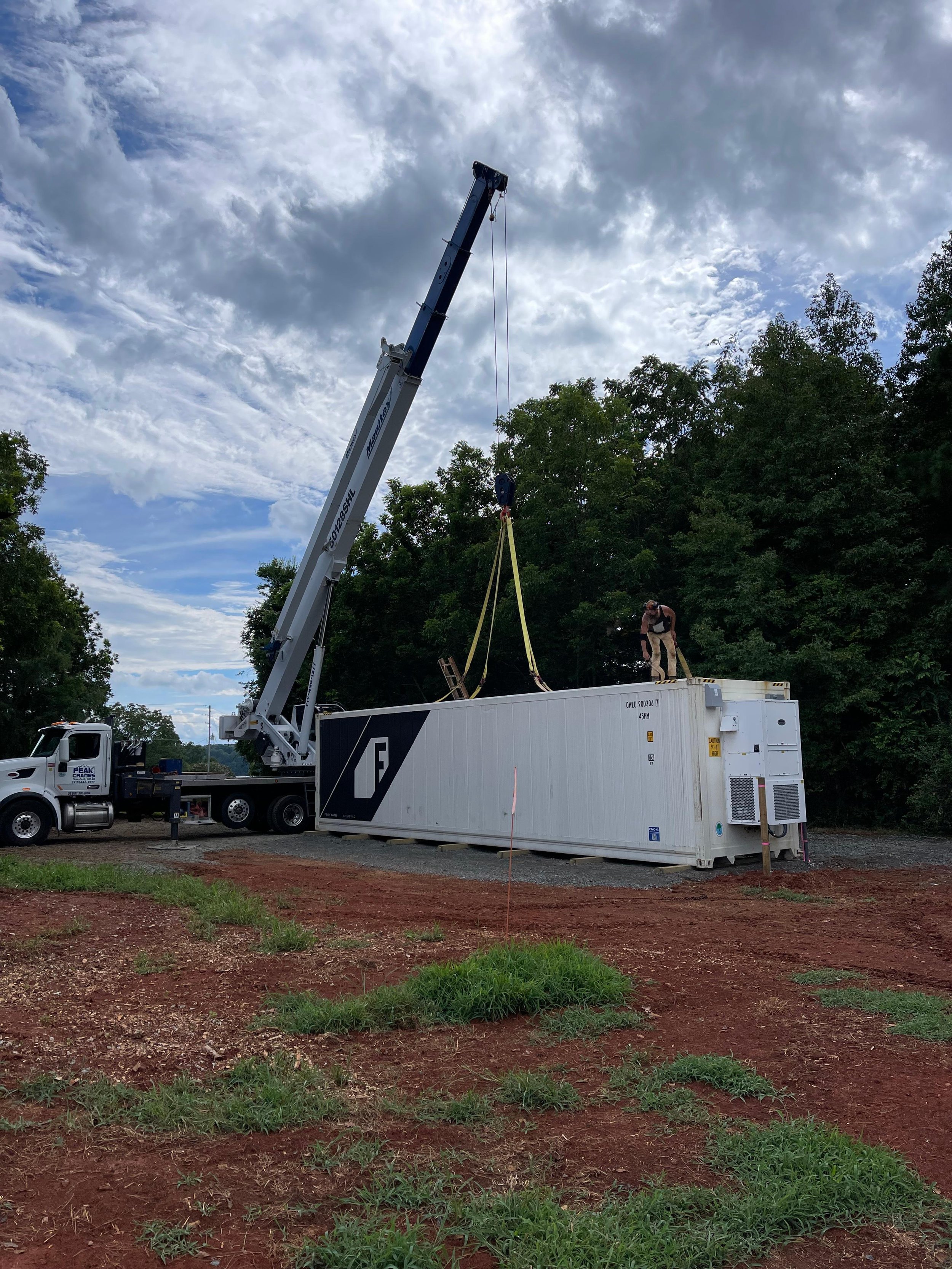Teaching Sustainability: How Hydroponics Fit into School Curriculums
Schools are instrumental in shaping the next generation's ability to address environmental challenges. By incorporating sustainability into their curricula, schools not only enhance students' knowledge and skills but also foster a proactive approach to environmental responsibility.
A growing trend in educational environments is the adoption of hydroponics as a sustainability teaching tool. This method utilizes a nutrient-rich water solution instead of soil to grow plants, offering a clean, efficient, and more sustainable alternative to traditional farming practices. Companies like Freight Farms are leading the charge in this innovation, equipping schools with the technology and resources to bring dynamic, hands-on learning experiences into the classroom.
As we explore the use of hydroponics in educational settings, it’s crucial to recognize its potential beyond just science experiments. Hydroponic farming allows students to explore a variety of academic paths, such as science, technology, nutrition, environmental studies, and much more.
By adopting hydroponics, schools can offer hands-on learning opportunities that not only educate but cultivate a sustainable mindset among students. This article will cover the fundamentals of hydroponics, its classroom benefits, and how you can integrate the technology into your curriculum.
The Basics of Hydroponics
Hydroponics is a fascinating form of agriculture that allows plants to grow in a water-based, nutrient-rich solution, eliminating the need for soil. There are many different hydroponic methods you could use based on space constraints and plant needs, making it highly adaptable for educational settings. The most common types of hydroponic systems include:
Wick Systems: The simplest type of hydroponic system, where a wick passively transports nutrients to the plants.
Deep Water Culture (DWC): Plants are supported on a floating material while the roots hang below in a nutrient solution.
Nutrient Film Technique (NFT): An active hydroponic system that uses pumps to circulate the nutrient solution through shallow channels where the plant roots lie.
Aeroponics: Plant roots hang in the air and are periodically misted with nutrients.
The benefits of hydroponics extend beyond environmental factors; they include logistical advantages such as requiring less space and alleviating soil quality concerns, making it ideal for urban schools that might lack large outdoor areas. These systems can be set up indoors, such as in a classroom or on a rooftop, providing a year-round gardening opportunity that is particularly beneficial in colder climates.
Hydroponics in Education: A Freight Farms Overview
Freight Farms, a leader in innovative agricultural solutions, has made significant strides in integrating hydroponics into educational settings. The company offers a range of products and services specifically designed to make hydroponics accessible and effective for schools. This section explores how their systems are used in educational programs and the impact they have on teaching and learning.
At the heart of Freight Farms’ educational offerings is the Greenery, a state-of-the-art hydroponic container farm designed to fit seamlessly into school environments. This farm is a controlled environment that can grow over 500 crop varieties regardless of weather conditions. The Greenery uses advanced hydroponic technology to maximize space and resource efficiency, making it possible to grow fresh produce year-round.
Educational Impact
Schools that have adopted Freight Farms' systems have experienced several benefits, from enhanced STEM education to improved student engagement. For instance, students can witness the complete lifecycle of plants—from seed to harvest—within their school premises. This immediate and continual access to a living lab enriches their learning experience and deepens their understanding of plant biology, nutrient cycles, and sustainable farming practices.
Read how Floyd County School of Innovation experienced increased student enrollment after integrating a Freight Farm into its STEM curriculum.
Supporting Curriculum Development
Freight Farms provides more than just the physical system; they also offer curriculum guides tailored to different education levels, ensuring that the content is age-appropriate and aligns with learning objectives across various subjects. Whether elementary students are learning the basics of plant life or high school students are engaging in more complex environmental science projects, Freight Farms equips educators with the tools they need to be successful.
Curriculum Integration
Here's how hydroponics can be woven into various academic subjects:
Science
Hydroponics provides a hands-on way to explore numerous scientific concepts. In biology, students can study plant anatomy and physiology in real time. Chemistry classes can dive into the nutrient solutions and pH levels essential for plant growth, while physics students might explore the principles behind the hydroponic systems themselves, such as water flow and light energy conversion.
Mathematics
Mathematics can be taught through practical application in the hydroponic garden. Calculating growth rates, nutrient concentrations, and even budgeting for farm resources can provide engaging and educational real-world math experiences.
Social and Environmental Studies
Hydroponics also opens discussions about larger environmental and social issues. Lessons can cover topics like sustainable agriculture, the global food system, and the environmental impact of traditional farming methods. This can lead to broader discussions about food security, economic factors, and sustainability—encouraging students to think critically about the world around them.
Benefits of Hydroponics in Schools
The adoption of hydroponic systems in schools comes with a wide array of benefits:
Environmental Benefits
Hydroponics is inherently more sustainable than traditional farming methods. It uses about 90% less water and eliminates the need for pesticides. These systems can also be installed directly on school grounds, reducing the carbon footprint associated with transporting food.
Educational Benefits
Students engaged in hydroponics enjoy a more hands-on, experiential learning environment. The tangible nature of growing food through hydroponics helps solidify abstract scientific and mathematical concepts. It also encourages problem-solving and critical thinking skills as students manage their own growing systems.
Social and Health Benefits
Hydroponic systems in schools can have profound social benefits. They provide a sense of community and responsibility among students, foster teamwork, and teach valuable life skills. Additionally, having access to fresh produce can lead to healthier eating habits and a greater appreciation for where food comes from.
Challenges and Considerations
While integrating hydroponics into school curriculums offers numerous benefits, schools must address several challenges and logistical considerations to ensure the success and sustainability of these programs.
Logistical Challenges
Space Requirements: Although hydroponic systems are more space-efficient than traditional farms or gardens, they still require a dedicated space within a school’s premises. This space must be suitable for setting up the equipment and accessible for consistent student interaction.
Freight Farms Solution: Freight Farms' hydroponic container farms are compact and self-contained, designed to minimize the spatial footprint while maximizing yield. They’re ideal for schools with limited available land, as they can easily be placed in parking lots, courtyards, or any unused outdoor space.
Initial Setup Cost: The upfront cost of setting up a hydroponic system can be significant. This includes the cost of the hydroponic units and any necessary modifications to school infrastructure, such as water systems and lighting.
Freight Farms Solution: These container farms are engineered to be plug-and-play, reducing the need for costly infrastructural modifications. Additionally, numerous schools have received grants to support the initial investment required for a Freight Farm.
Considering that a single Freight Farm can yield 990 heads of lettuce every week, many schools recognize the long-term benefits of the upfront cost. By growing their produce directly on-site, schools can substantially decrease their reliance on external suppliers, leading to significant cost savings over time. Students and staff can also sell the Freight-Farmed produce to community members, thereby operating a student-led farm business and generating a consistent profit.
Learn how Morgan Hill Unified School District can feed 60% of its student population with just one Freight Farm.
Technical Requirements: Hydroponic systems, especially advanced models, require a certain level of technical expertise to install and maintain. Schools must ensure they have access to knowledgeable staff or external support to manage these systems.
Freight Farms Solution: Freight Farms provides comprehensive training programs and ongoing technical support for school staff. Thus far, they’ve trained over 1,500 farmers worldwide on using their hydroponic container farm technology, many of whom had little to no farming background before purchasing their farms. Their user-friendly farm automation software, farmhand®, also significantly simplifies farm management, making it accessible for educators without a technical background to operate the farm seamlessly.
Educational Challenges
Teacher Training: For hydroponics to be effectively integrated into the curriculum, teachers must be adequately trained in the technical aspects of hydroponics and how to incorporate it into their teaching. This requires professional development and ongoing support.
Freight Farms Solution: After purchasing a farm, schools will receive ongoing support from the Freight Farms team and become part of the farmhand community—the globally connected network of Freight Farmers. Through this community, educators can connect with peers, ask questions, share information, showcase progress, and celebrate accomplishments, fostering a collaborative environment for learning and growth.
Curriculum Development: Schools must develop or adapt existing curricula to include hydroponic farming. This may involve collaboration with curriculum experts to ensure that the hydroponic activities align with educational standards and learning outcomes.
Freight Farms Solution: Freight Farms collaborates with educators in various educational settings to develop curriculum materials that can seamlessly integrate into a school’s existing program. They’ve outlined a comprehensive curriculum guide that offers specific guidance on utilizing a container farm as an educational tool, along with curriculum ideas and ready-to-use lesson plans.
Maintenance Challenges
Ongoing Costs: Beyond the initial setup, hydroponic systems incur ongoing costs such as nutrients, seeds, and energy consumption. Budgeting for these costs must be considered in the school's long-term financial planning.
Freight Farms Solution: The efficiency of Freight Farms' systems reduces overall consumable costs. They offer bulk purchasing options for nutrients and seeds to help schools manage these expenses more effectively.
System Maintenance: Regular maintenance ensures the hydroponic system operates efficiently. This includes monitoring plant health, nutrient levels, and system functions, which can be time-consuming.
Freight Farms Solution: Freight Farms designs its systems for ease of use and minimal maintenance. They provide ongoing support and a proactive monitoring service through farmhand to help schools maintain their container farms with minimal hassle.
Conclusion
Hydroponics presents a promising opportunity for schools looking to enhance their curriculum with forward-thinking, sustainable agricultural methods. Despite potential obstacles, the advantages—from minimizing your environmental footprint to fostering student engagement—are significant. With schools increasingly prioritizing sustainability in their educational objectives, solutions like those offered by Freight Farms are not only beneficial but essential.
By integrating hydroponic systems, schools play a crucial role in fostering a sustainable future and empowering students to become the environmental leaders of tomorrow. The time is ripe for educational institutions to embrace this green technology and sow the seeds of sustainability in young minds.










